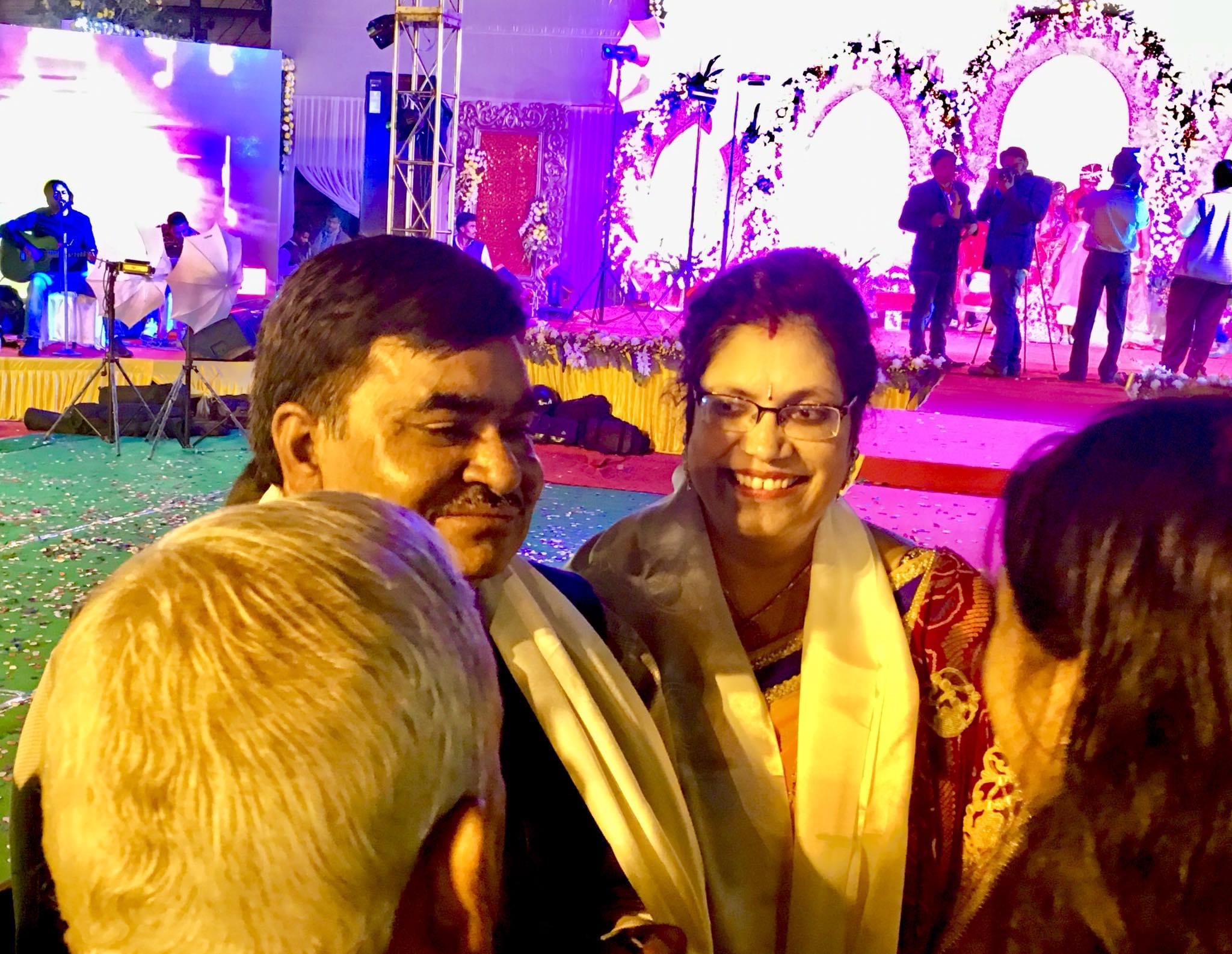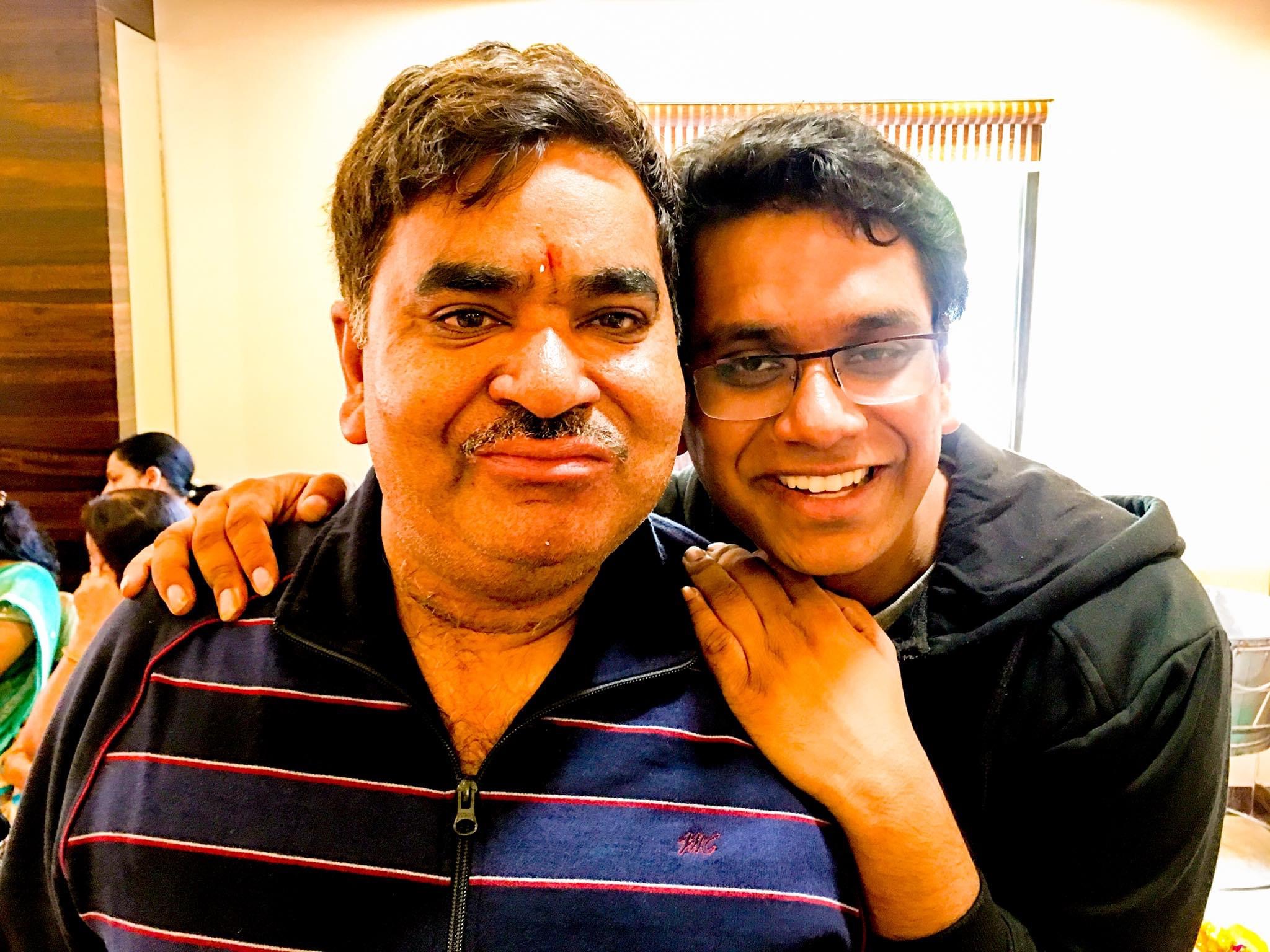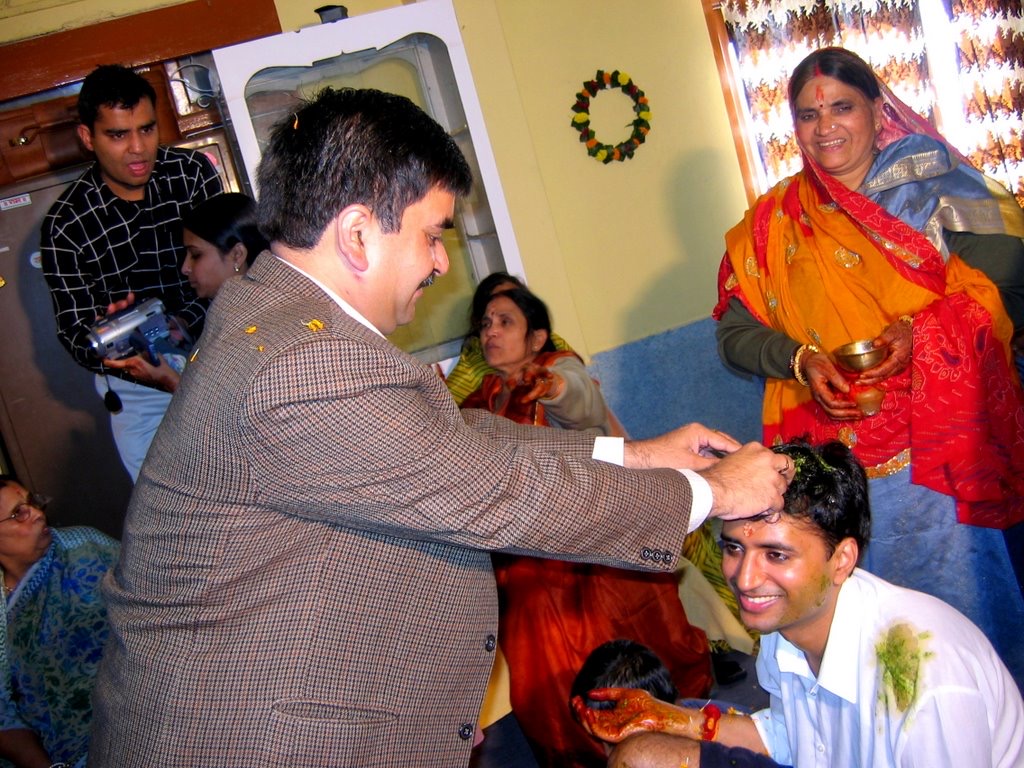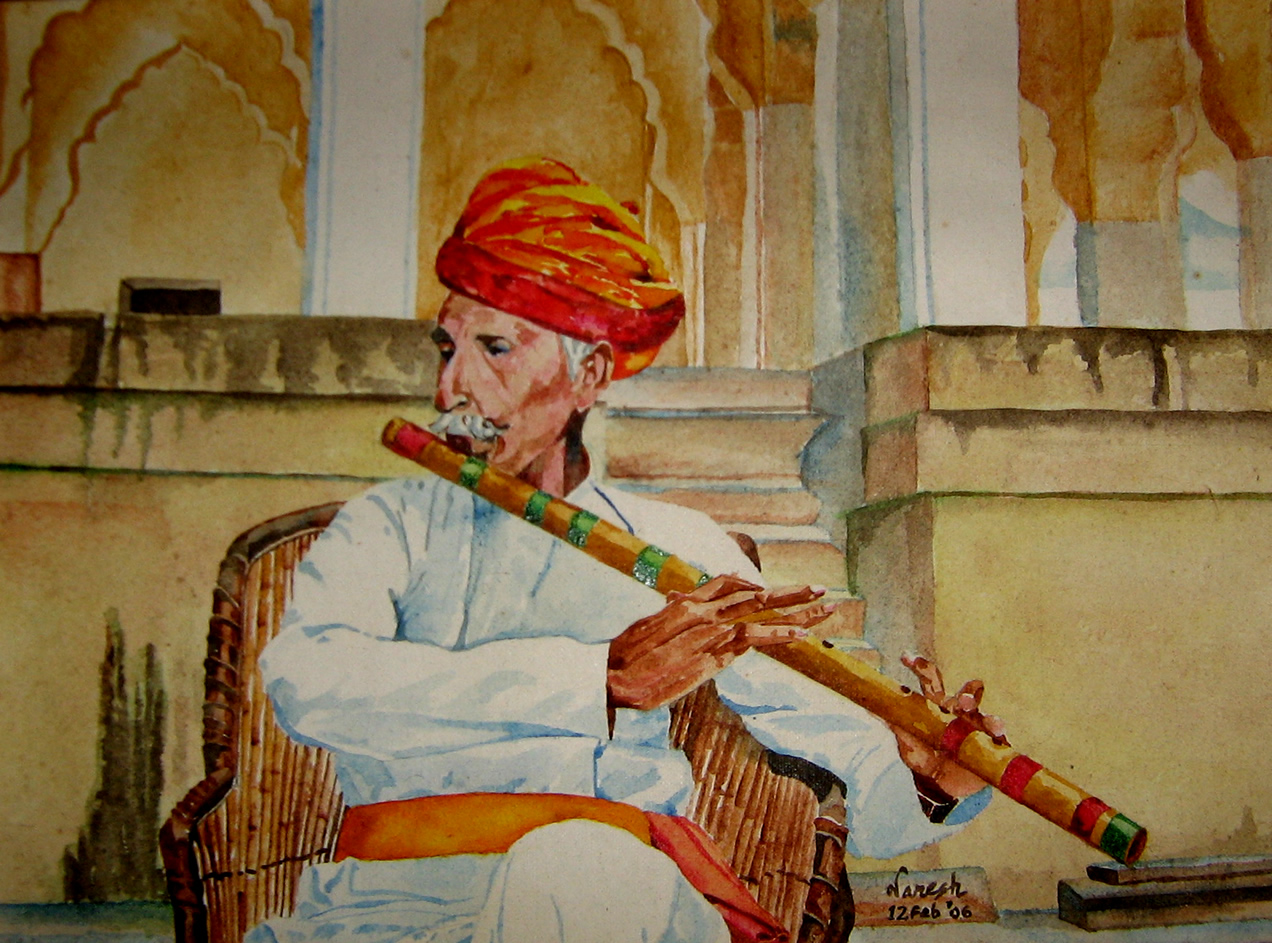Massachusetts, USA
Started: December 8, 2020, 11:47pm
Kamal bhena: My brother-in-law–brother–father-figure and a Good Samaritan to countless
I wanted to write this for the past 2-3 days, but was too grief-stricken – my own, and that of people I dearly love – to get myself to write. Kamal bhena was a man so strong and so tall that you didn’t realize he was the foundation pillar until he is gone.
“Nares, tyo Facebook ko profile picture kina haaleko? Hami eti bela barah din ko mourning ma chaun.” [Naresh, why did you update your Facebook profile picture? We are in a twelve day mourning period], he had said when I put up the picture of my shaven head on Facebook after my father’s passing on September 10. I told him that I was getting surprised expressions from different people when they saw me with a shaved head and didn’t want to keep explaining, and thus decided to share the picture. There aren’t very many people in a person’s life who will pick up the phone and scold you. We are lucky when we do. These are the people who are there for us, who watch out for us. On Diwali, he personally came with sweets for my mother and brothers’ families to ensure that they were not left without sweets, being the first major festival after my father’s passing.
Kamal bhena watched out not just for me, but for countless other people. He would ask questions to make sure you’re alright, offer spontaneous help – be it financially “paisa chahiyo bhane bhani haalnu” [let me know right away if you need money], physically, or logistically.
Whenever there were major family events where planning was required – weddings, other events, or any crisis situations of any sort – deaths, property issues, etc., I could bank on him for wise, sound, compassionate, and unbiased advice. I believe there are two types of people in the world – those who like doing “us versus them” and those who believe in taking everyone along. He was among those who looked out for all. Generosity and largeness of heart came naturally to him.
We would call him ‘Kattu bhaiji’, as everyone else did. His name was Kamal Agarwal. A fair-skinned man with a smiling, round face, and a moustache, and a husky voice owing to a vocal-cord issue, he used to be around next door in the neighboring ‘R.K. Agarwal’, the shop-house of my grandfather’s youngest brother. With three brothers and three sisters, he had grown up in Singtam, a small town by the Teesta river, about 30 kilometres from Gangtok. Sitting by the fire or heater in cold Gangtok evenings, he would tell us stories of the myriad experiences he had had, even as a young, self-made man. His own father had died in his 50s in Arunachal Pradesh, and he and his mother had traveled the hours-long journey in a car with his dead father seated between them. There were stories of handling various situations, and of people.
My sister Anita didi is six years older to me, and is smart, kind, and loving. We got along extremely well growing up, and she shared everything with me. She soon realized that ‘Kamal’ was the person she wanted to marry and have as her life partner. Once, she and I went and bought a maroon, half-sweater for him – I was thinking for ninety rupees, but she says, sixty. She gifted it to him. Anita didi was very happy to see him wear it, and equally upset when she saw his elder brother wear it one day. Kattu bhaiji had to do a lot of explaining.
My mother was initially against their getting married for multiple reasons – financial, educational, his voice, and also for the fact that the both his family and ours had the same Garg ‘gotra’ or lineage. One was expected to marry within the community, but not within the absolute same gotra. Finally, when my mother’s father in Kalimpong told her, “Jab ladka-ladki raazi, to kya karega kaazi” [When the boy and girl are ready, then what can the judge do], she relented and agreed. They found a workaround for the gotra issue, with my mother’s sister from Jalpaiguri doing the kanyadaan – the giving of the bride, and my sister getting our aunt’s gotra for the wedding. My cousin got to do the ceremonies meant for the brother of the bride that I had looked forward to. The wedding took place in the winter after my Class X in Tashi Namgyal Academy – on January 28, 1993 in Gangtok’s beautiful Hotel Tibet in Paljor Stadium road. We had to switch from calling Kattu Bhaiji to Kamal bhena, which seemed odd at first, but we soon got used to it. My school friends were there for the wedding. It was attended by hundreds of Kamal bhena’s friends and people from his large network. People kept pouring in. I had to rush home in a car to ask for more pooris to be made and missed their ‘varmala’ or the garland ceremony – something I regretted for a long time. I remember heaps of wedding gifts and khatas, the white, silken traditional Tibetan and Buddhist scarf used in Gangtok for various ceremonies. Kamal bhena contributed to the reception cost – something unheard of in a patriarchal society where the girl’s family was expected to bear all the wedding costs. He also refused to take ‘Tika’ or ‘Tilak’ money, where cash was often demanded by the groom’s side. That single act perhaps elevated him greatly in my eyes, and I started looking up to him, and in doing so, joined many other people and families whose lives he’s touched and made a difference to.
When I went to study in Singapore in 1995, he was one of the two sureties who signed my scholarship bond. When I bought my first computer while at Nanyang Technological University, I had borrowed money from him. ‘At every step, whenever I needed someone, he was there’. This line could not just be mine – but that of hundreds of other people – whose lives he would have similarly touched. As his daughter Shalu told me, “Unhone kitni families ko apne upar dependent kar rakha tha.” [There are so many families that he had made dependent on himself.] When Anita didi, Kamal bhena and my nephew Neel finally visited me in Singapore in 2007, I had to move houses immediately after their stay. For a person who had his staff to help him while at home, he had asked as he physically helped me move, “Coolie paundaina?” [Don’t you get porters?] I had told him, “Hoina bhena, paundaina.” [No, we don’t here]. The memories with Kamal bhena are too many to write in a short essay. His face flashes right before my eyes. His voice speaks to me in Nepali, the language we conversed in.
My sister, Anita didi, and Kamal bhena were totally co-dependent. Their’s was a love that had developed into deep care for each other. If I spoke to Anita didi on the phone for ten minutes, she would say, “Tero bhena, tero bhena…” ten times. As her childhood friend, Leena didi also told me, “Jaile ta Kamal, Kamal, Kamal bhani bascha.” [She’s always saying Kamal, Kamal, Kamal…] Whether concern or worry or being upset over something – it was all about him. When Kamal bhena would fail to convince my sister over his point of view on something, he would ask me to speak to her. Once, there was a wedding in Surat (of my cousin who had conducted the brother’s ceremonies at her wedding) that she really wanted to attend, but the city was gripped by plague at that time. Kamal bhena was worried about her safety and wanted her not to go.
Kamal bhena had multiple health issues ranging from ulcerative colitis to diabetes. His uncontrolled sugar levels took a toll on his kidneys, until he required dialysis. Small wounds, like a infection in the big toe, took long to heal. Once he had to be airlifted in a helicopter from Gangtok in order to get better medical care. His goodwill ensured that he always had a stream of people standing up for him. They managed to find a kidney donor for him, and he got a new lease of life, supported by immunosuppressant drugs, medicines that reduce the body’s immune system.
Anita didi took it upon herself to take care of his strict diet, along with the care of her first son, Sahil, who was born premature in 1994. The lack of an incubator in Gangtok’s STNM hospital, and an oxygen overdose during delivery led to his permanent brain and eye damage. He is now a 26-year old, 6-month old baby. Anita didi has always seen Sahil both as blessing and her purpose.
Their second son Neel was born in 1998, and has been an ideal child, excellent in studies, and devoted to his parents.
In March this year, as the coronavirus pandemic raged across the world, and I saw people taking it lightly, I recorded a video in Hindi to sensitize people of its dangers, and how to maintain social distancing and wash hands often. Along with public concern, I was also scared for my 83-year old father who had survived a stroke, and for Kamal bhena, who had had a kidney transplant. I had long conversations with various people over the phone, and also with Kamal bhena telling him the do’s and don’t’s.
When my father died earlier this fall season in September and was tested as COVID positive upon death, hard as it was, I ensured that Anita didi, Kamal bhena, or Neel wouldn’t come to my house. Kamal bhena himself was mostly careful, and was following guidelines.
In mid-November, there was another death in town. The man who died was close to Kamal bhena, and he went to the condolence meet. Kamal bhena soon took ill, had fever, and his oxygen level started dropping in the coming days. When it fell below 90, his son consulted with his nephrologist and decided to immediately take him to Siliguri, four hours away. He was hospitalized there at Neotia hospital on November 25. He was tested for COVID, came out as positive the next day, and was in ICU, with family not allowed to visit. He was allowed a daily short video call with a family. His doctor called during the day with updates. He had breathing difficulty but was stable, and was given 10 liters of supplemental oxygen.
On the 27th, he was given 15 liters of oxygen to help maintain his oxygen level around 95-96, his immunosuppresent drugs were highly reduced to help improve his immunity, and he was given remdesivir and a steroid. We were told that his lung infection is high. By the next day, he had severe lung infection, and was not stable with 80% external oxygen being given to him. His oxygen levels were around 80 despite supplemental oxygen. In the video call on the 29th, he told his son that he had some breathing difficulty (after 15-20 seconds of talking), “par theek hoon” [but I am okay]. He was still being given 80% oxygen. His oxygen level improved to 94-95 with external oxygen. The ICU in-charge said that he would take time to recover. By the next day, his oxygen requirement had been reduced from 80% to 70%, but he was still critical.
In the video call on December 1, Kamal bhena was panting a little, but looked better than the previous day. He said he wanted fruits. He asked his son to come visit him. When Neel said he wouldn’t be allowed, he said he can persuade the liftman. By afternoon, the external oxygen required had been reduced further to 60%, and his oxygen levels were 94-95 with support.
Anita didi had been getting anxious to speak to him, so on December 2, the morning video call was with her. However, he couldn’t speak without his oxygen mask. He was asking to meet. After the call, she got more anxious seeing him unable to speak normally. In the afternoon update, we learnt about his severe pneumonia. The external oxygen support was increased back to 80% from the earlier improvement to 60%. The doctor said that the patient is serious and at risk. In a later video call with Neel, he had his oxygen mask on, was communicating by waving his hands, and asked for skin balm. Neel told him, “Aap bilkul theek ho jaoge.” [You will get totally fine], and that he was not allowed to visit.
As I was able to get normal work done, I wrote this note to myself, “The ability to feel an emotion, compartmentalize it, postpone it, and to transform it is an important ability.” Meanwhile, Neel had been getting more than 60 phone calls each day inquiring about his father’s health. I told him it was the goodwill earned by this father which was eliciting concern from a lot of people.
On December 3, Kamal bhena said, “Mujhe theek nahin lag raha hai.” [I don’t feel good]. He was pleading that at least one person from his family should come visit him at the hospital. His creatinine was fine and below 1, which indicated that his kidneys were okay. His sugar levels, which were earlier high, were now in control. His oxygen saturation level, which were being maintained around 95-96, was immediately dropping to 75 when his mask was removed to give him food. The 80 percent external oxygen indicated that he was still critical. In the video call on December 4, Kamal bhena said he was not feeling good, was adamant saying he didn’t want to stay in the hospital, and asked for a skin balm. In the daytime update, the doctor asked to wait and watch, and that his status was critical. Oxygen level was being maintained at 80 with 100 percent external supply. He was adamant not to allow food tube through his nose (which would have helped maintain the oxygen level), so was still being fed orally. His lungs were infected, but he was not in a condition for a chest scan.
On December 5, I got a message from Neel, “He has been put on the ventilator. Doctor said highly critical. I’m going to the hospital right now.” The doctors said that he would need ECMO therapy. I found out that ECMO or extracorporeal membrane oxygenation is a technique of providing prolonged cardiac and respiratory support to persons whose heart and lungs are unable to provide an adequate amount of gas exchange or perfusion to sustain life. However, Siliguri hospitals didn’t have the ECMO facility, and he was not in a position to be shifted to Delhi or elsewhere. In the daytime update, we learnt that his blood pressure had fallen to 70/40, and his oxygen was between 60 and 80. The doctor said, “Aap log prepared ho jaiye.” [You all get prepared]. On December 6, his vital parameters were fluctuating.
For the first time, I discussed with Neel about what would happen if he didn’t make it. Also informed my younger sister and aunt for the first time that Kamal bhena has gotten COVID and is hospitalized. Anita didi was in Gangtok with Sahil. I assured her, and spoke to her normally. Neel and I discussed getting her to come to Siliguri early morning.
At 1:46 am US Eastern time on Sunday, I got a message from Neel, “Papa is no more.” He had passed away at 11:45am India time on December 6. Later, Neel told me that when Anita didi had just reached Siliguri and was with Neel, he had gotten a call from the hospital. The person said, “Unka heart band ho gaya hai. Unko revive karne ki bahut koshish ki par nahin hua.” [His heart has stopped. We tried a lot to revive but couldn’t.] Neel asked, “Uska kya matlab hai?” [What does that mean?]. “Uska matlab hai ki [it means] he is no more.”
Between busy phone lines, I could only get to speak to Anita didi after a few hours when she was waiting outside the hospital to get one last glimpse of his face (which she did), as, following the hospital COVID protocol, he was to be cremated the same day in Siliguri itself, with two family members – his son and his brother, allowed to perform the last rites.
While I had anticipated this eventuality for the last few days, facing the reality of it was not easy. A pillar and guardian of the family was gone. Kamal bhena was a mentor to me. A lot of the people skills that I have learned are imbibed from him. I told Neel, “Until now, I was your Maama [maternal uncle]. Now, I am your father too. Never think that you don’t have a father.”
I was on the phone with crying family members. Ma was saying, “Tera Bapu gaya to mein bardasht kar li. Ab kyaan karoon?” [I tolerated when your father left. How do I do it now.] I heard my aunt in Vrindavan cry for the first time in years, “Meri choti si chori ko ke howgo?” [What will happen of my little girl?” My sister in Nepal said, “Abui na bhan na!” [Don’t say like that] when I informed her of his passing. Leena didi was saying, “Yo ke gareko bhagwan le! Kati dukkha dine mero saathi lai! Pahila euta chora lai esto banayo, pachi Bhaiji lai etro health problem, aafno health, pheri bau lai, aba bhaiji lai laane! Kasto gareko ulle!” [What is this that God is doing! How much suffering will He give my friend! First, he made a son like that, then health problems to [Kattu] bhaiji, her own health, then took her father, and now bhaiji. What is He doing!]
In 2009, I had created a Facebook album of beautiful people in my life. Including a picture of Kamal bhena with me at a ceremony during my wedding in 2003, I had written, “Kamal bhena: For showing how a son-in-law can be more than a son; for touching and making a difference to countless lives; for saying, ‘Aru ta malai thaha china, tara mero malaami ma chaiyn tumpro manche aauncha hai.’ [I don’t know anything else, but lots of people will come to my funeral.] For being a person with faith in his ‘duita haath duita khutta.’ [two hands and two feet].” He, of course, did not know then that he would die during the Coronavirus panedemic, where funerals would have limited people, and which would also take his life.
In 2011, when my father’s elder brother passed away at 76, Kamal bhena had told me. “Heri haalnu. Bau aba dui barsa bhanda besi banchdaina.” [Mark my words. Your father won’t survive for more than two years now.]. My father lived for nine more years after that. But little did I know that Kamal bhena himself would not complete three months since my father’s passing.
Facebook walls have gotten filled with messages like, “We have lost the best person from our community.” “A person with a very big heart that I have come across.” There are many condolence messages, and a beautiful bouquet of flowers from my colleagues at Simmons University, Boston.
Anita didi has been inconsolable during the past few days. “Mo theek chuina Naresh” [I am not alright Naresh]. Ma was saying, “Chori bhot himmat karke chale thi. Ba toot taat gi. Kyan dheer bandhawa chori ne!” [The girl had been very brave all this while. That strength is shattered. How do we console her!]. Composing herself, Anita didi says, “Mein himmat karoongi – Neel ke vaaste, Shalu ke vaaste, Sahil ke vaaste, aapke vaaste, sabke vaaste. Mane himmat karni padegi.” [I will be strong – for Neel, for Shalu, for Sahil, for myself, for everyone. I will need to be strong.]
Completed: December 12, 2020, 1:20am






